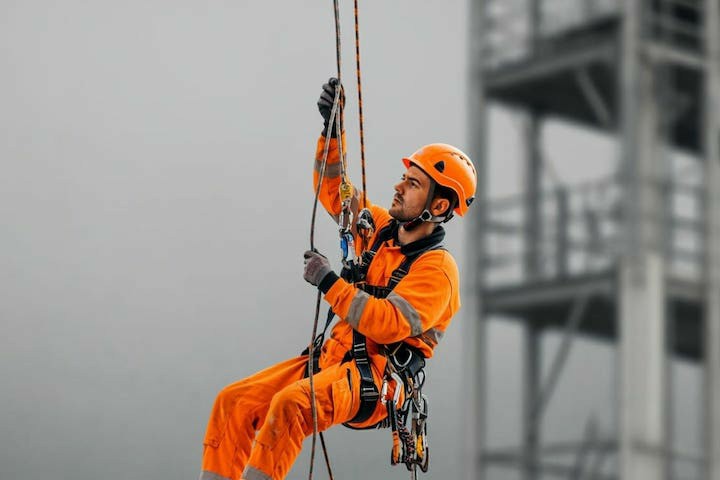Essential Best Practices for Conducting Risk Assessments Before Working at Heights
In industries where working at height is a common requirement, ensuring the safety of employees is paramount. A thorough risk assessment before commencing work can significantly reduce the chances of accidents, ensuring that safety protocols are adhered to and regulatory compliance is achieved. This blog post outlines the step-by-step procedures for conducting effective risk assessments, discusses common risk factors, and emphasizes the importance of training for personnel involved in such critical tasks.
Why Conduct Risk Assessments?
Risk assessments serve as a foundational element of workplace safety when working at heights. They are vital for:
- Accident Prevention: By identifying potential hazards and implementing control measures, risks can be significantly reduced.
- Regulatory Compliance: Adhering to safety regulations prevents legal issues and enhances your organization’s reputation.
- Workplace Safety: Ensuring a safe working environment protects employee welfare, boosting morale and productivity.
Step-by-Step Guide for Conducting Risk Assessments
1. Identify the Hazards
The first step in any risk assessment is to identify all potential hazards involved in working at heights. Common hazards include:
- Falls: The most significant risk, often caused by unprotected edges, unstable surfaces, or improper use of ladders and scaffolding.
- Weather Conditions: Wind, rain, or snow can affect stability and visibility.
- Equipment Failure: Malfunctioning lifting devices or platforms.
- Human Factors: Fatigue, inattention, or inadequate training.
2. Evaluate the Risks
After identifying hazards, the next step is to evaluate the associated risks. Consider:
- Likelihood of Occurrence: How likely is it that the hazard will lead to an incident?
- Severity of Consequences: What would happen if the hazard did result in an accident?
Use a risk matrix to categorize risks, providing a visual representation of where you currently stand in terms of safety.
3. Implement Control Measures
Based on the risk evaluation, implement control measures designed to minimize risk. Controls can be categorized as follows:
- Elimination: Where possible, remove the hazard entirely (e.g., using equipment that doesn’t require height access).
- Substitution: Replace with less hazardous options (e.g., using a secured platform instead of a ladder).
- Engineering Controls: Install guardrails or safety nets.
- Administrative Controls: Create safety protocols, such as work schedules that limit time spent at height.
- PPE: Provide personal protective equipment like harnesses and helmets.
4. Monitor and Review
Continuous monitoring of safety practices and regular reviews of risk assessments ensure that they remain relevant:
- Regular Inspections: Check equipment and procedures frequently to ensure compliance and safety.
- Reporting Systems: Foster a culture where employees report near misses and hazards.
- Review Procedures: Update risk assessments regularly or when there are changes in work processes or equipment.
Common Risk Factors in Working at Heights
Aside from the main hazards discussed, several risk factors frequently contribute to accidents:
- Inadequate Training: Employees must receive proper training to recognize hazards and use equipment safely.
- Equipment Misuse: Improper handling of tools and machinery can lead to hazardous situations.
- Fatigue: Long hours or insufficient rest can impair concentration and physical performance.
- Environmental Factors: Slippery or uneven surfaces can increase the likelihood of falls.
The Role of Training in Risk Assessments
Implementing a successful risk assessment protocol begins with adequate training. Certified Working at Heights Training equips employees with:
- Knowledge of Hazards: Understanding what risks they face when working at heights.
- Risk Assessment Techniques: Skills to accurately assess and mitigate risks on-site.
- Emergency Procedures: Familiarity with protocols in case of an accident.
Offering a Working at Heights Course Online can be a highly effective solution, making training more accessible while ensuring that all team members are up-to-date on safety practices.
Case Studies: Success Stories from Risk Assessments
Numerous organizations have improved their safety outcomes through effective risk assessments. Here are a few examples:
- Construction Company: After conducting a comprehensive risk assessment, a construction firm redesigned its scaffolding plans, reducing falls from height incidents by 70%.
- Telecommunications Provider: By implementing a new working at heights safety policy based on risk assessment findings, this provider saw a significant drop in reported injuries, demonstrating the effectiveness of adhering to safety protocols.
Conclusion
Conducting a thorough risk assessment before working at heights is essential for safeguarding employees and ensuring compliance with safety regulations. By following the structured approach outlined in this post—identifying hazards, evaluating risks, implementing controls, and monitoring outcomes—organizations can significantly reduce the likelihood of accidents. Furthermore, comprehensive training such as Working at Heights Certification prepares workers to recognize and manage these risks effectively.
If your organization is committed to improving safety standards and fostering a culture of awareness, now is the time to integrate risk assessment protocols into your workplace safety plans. For more information on developing comprehensive training programs, contact us at [email protected].



 349,500 Offered Certificates
349,500 Offered Certificates
 24/7 Online Training
24/7 Online Training
 Money Back Guarantee
Money Back Guarantee
 Fully Accredited Courses
Fully Accredited Courses
